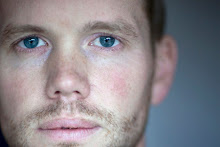Last week I had the opportunity to sneak into a couple of rehearsals of Zakłady na Życie (Plant-Life), the performance that James Beckett is preparing for the Festival a/d Werf 2010. In this work in progress, he is looking for something subtle that escapes clear-cut definitions. Neither fully a performance but also not a work of visual art. Probably the realm where this work could be more accurately placed is that of music. Throughout the rehearsal, James often refers to the performers as musicians. This does not mean that they actually play music, at least not by standard accounts of what music is. But they understand movements and words in a way which is akin to that of musicians. Their craft is not that of emotions and storytelling, and not even that of actions and sounds. Their work is inserted in the universe of silences and notes, of rhythms, repetition and sequences that engage with the time and space of the performance with the elegance of a minimalist opera. It is not by accident that he often refers to the work of Robert Ashley, a major composer and creator or multidisciplinary projects, that extended the boundaries of musical exploration in radical ways. His work Automatic Writing (1979), for example, integrated words that were triggered by his mild Tourett's Syndrome. He justifies this exploration in a fascinating way: “I wondered, naturally, because the syndrome has to do with sound-making and because the manifestation of the syndrome seemed so much like a primitive form of composing-an urgency connected to the sound-making and the unavoidable feeling that I was trying to 'get something right'-whether the syndrome was connected in some way to my obvious tendencies as a composer.” (click here for the complete article)
The forms explored by Ashley -which often include only a restricted number of elements that are inserted into structures where repetition is very important- certainly provide some inspiration for James. On a different level, however, his usage of found objects is probably more closely related to world of contemporary visual arts or to the theatrical work of directors such as Tadeusz Kantor (as I have pointed out in a previous post.) From a collection of unusual relics found in abandoned Polish factories, he has devised a space that offers a glimpse into the life inside those factories. It is not a collection of stories or a historical explanation of what happened there, but rather an artistic interpretation, carefully crafted by the combination of concrete objects and rhythmic sequences of voices and movements, that are both compelling and mysterious.
Friday, April 16, 2010
Subscribe to:
Post Comments (Atom)



No comments:
Post a Comment